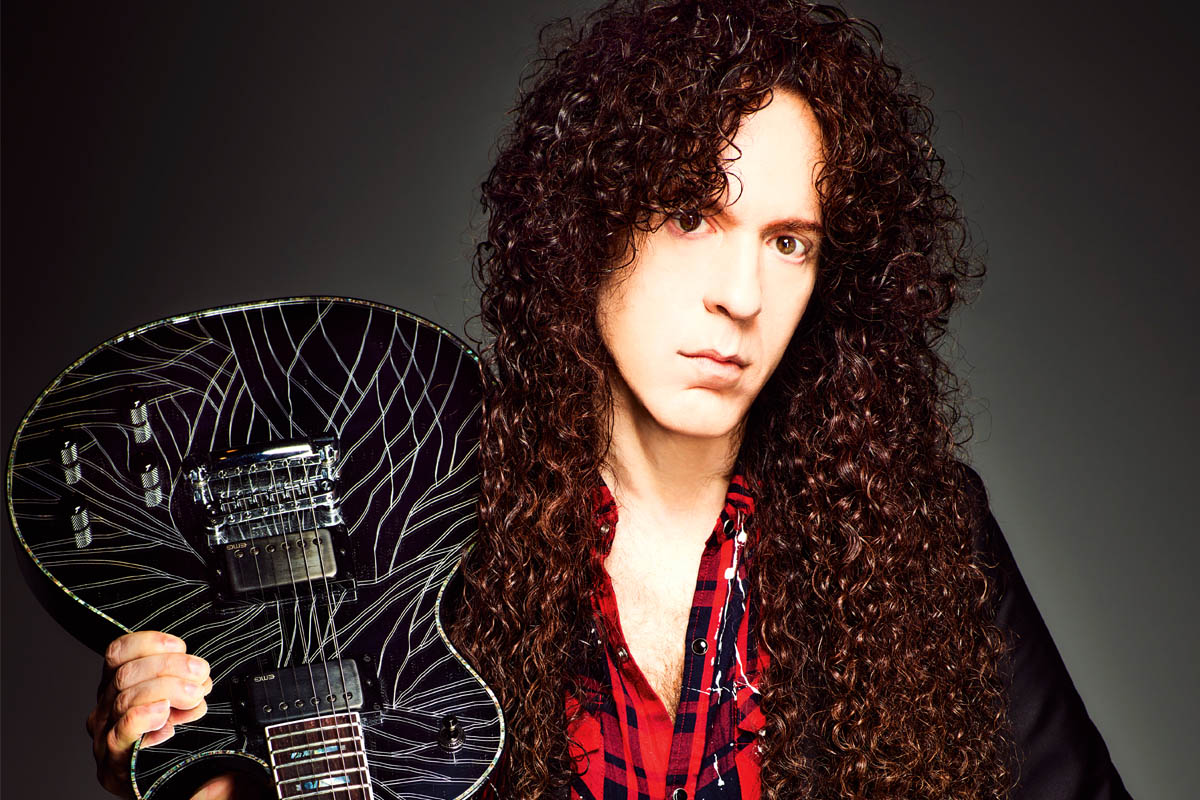Marty Friedman: “Much of the Japanese music that is currently very popular has a melodic structure that echoes a lot of '70s Western rock and pop“
The shred legend spills the beans on the third album in his Tokyo Jukebox series, which celebrates his love for Japan

Regularly hailed as one of the most innovative and explosive guitarists in the rock arena since his appearance on Cacophony’s 1987 debut album, Speed Metal Symphony, Marty Friedman went on to spend 10 years in Megadeth from 1990.
For many, the albums Megadeth released with Friedman onboard are the best in their catalogue. Marty left Megadeth in 2000, stating that he felt restricted by the boundaries of traditional metal and that it was counter-productive to his evolution as a musician.
Life after ’deth included a move to Japan in 2003, where he had already experienced success while in Cacophony and Megadeth. Since then he’s become a huge multimedia star in his new home-country, appearing on more than 800 TV shows – everything from cookery to sitcoms and movie roles.
His love of Japan is evident in all that he does, and the high esteem in which he is regarded there was reflected when the Japanese government commissioned him to compose Japan Heritage Official Theme Song, to be played at government-sponsored events celebrating Japanese heritage.
This is your third album of instrumental covers of Japanese pop songs. How do you choose the tracks and turn them into the guitar powerhouses they’ve become?
“It’s a crazy long process. They are all very different from the originals, but still retain all the essential motifs of the original song. Doing that and also trying to make it sound like an original of mine is a challenging thing. I make demos of a bunch of songs; some work and some don’t. When one does, I approach the artist, manager or publisher to get the rights to cover it.
“I never ask for the rights until I’m sure it will work as it would be very impolite to get approval and then not use the track. It is all about the vocal melody: if it is too fast or too repetitive, it can sound funny when you play it on the guitar. Some melodies just sing and those are the ones that I really enjoy.
All the latest guitar news, interviews, lessons, reviews, deals and more, direct to your inbox!
“As this is my third album of Japanese pop covers, often I will automatically know where I’ll take something, but Shukumei was an unusual one for me to choose. The group who does that, Official Hige Dandism, is huge in Japan at the moment. I like their stuff and I wanted to have a very current song on the record. It wound up going in an extremely progressive direction with really tricky lines to play. When you know what you want it to sound like, sometimes the parts to get there can be crazy hard.”
The melodies on the songs are all very Western-sounding and quite retro, although the artists are all Japanese.
“That’s a great observation. There is a lot of influence from Western pop in Japanese chart music. Much of the Japanese music that is currently very popular has a melodic structure that really echoes a lot of '70s Western rock and pop – the chords, progressions and key modulations.
“There is also a Japanese trademark thing where they can use a major melody in a major key yet still make it sound wistful and melancholy. I always wondered how they made that happen – that’s a key element in Japanese music that I like to dig into.
There is also a Japanese trademark thing where they can use a major melody in a major key yet still make it sound wistful and melancholy. I always wondered how they made that happen
“The cover versions add a lot of weight to the originals and really take them into the rock arena with the loud distorted guitars. I definitely put a ton of weight on them and with a ton of guitars. It is a very guitar-intensive type of album. To do that many parts and make them all clear to allow all the melodies, harmonies and counterpoints to shine, you inevitably wind up with a pretty weighty piece of music.
“I put a lot of emphasis on things that may not have been obvious about the originals, but you have to do that sort of thing when you’re taking the place of a vocalist; you have to replace the vocals with something that will hold the listener equally as much.”

Tonally, you cover a really wide range. What were your key pieces of gear for this album?
“The whole record was basically all recorded with my signature stuff – my Jackson guitars, Engl amps and EMG pickups. The differences between the clean parts and heavy parts were purely down to playing around with what I always use and just rolling the volume off and that kind of thing.
“My whole purpose of creating a signature guitar was that I could go to any music store in the world and pick one up off the wall. I’m not a huge gear junkie or gear maniac; I just want something that works and is consistent. If I’m not touring, I might be doing seminars or clinics in strange places, and all that I need to know is that they have a music store that carries my guitar. I can just show up and use that.
“The only effect I find essential is a Maxon AF-9 Auto Filter. It’s a wonderful pedal – it gives a bit of the human wah voice feel without being a typical wah sound. It’s got to the point where I’ve played with it so much that my guitar tech tells me that my playing sounds that way even when it’s turned off [laughs].
“I think I’m subconsciously adjusting my playing habits to the sound being shaped by that pedal so much that I’m still getting those nuances, even when it’s turned off. The way I use it is subtle – I keep everything on zero so it just adds a small hint of expression and perhaps humanness than it would otherwise have had.”

What was the recording process?
“I don’t ever do anything more than rough demos at home; I’m no big home-studio kind of guy. I mostly recorded the tracks in Tokyo and mixed them in Sweden. I work so fast that I need a great engineer who can also work super-fast with me. Even though I am a very quick worker, it took several months to get everything completed because there is so much going on with each track.
“The only plus of the world shutdown was that I actually went back and spent an extra few months really polishing every detail as I had the time to do it. For so many artists, I guess the best way to use the lockdown time has been to make the very best record that they can do. For me, there were no distractions and that degree of focus has been really beneficial.”
The cover versions add a lot of weight to the originals and really take them into the rock arena with the loud distorted guitars
What’s coming up for you next?
“I’m going to be making videos for tracks from the record and I’ve got a tour of Japan in April. Japan is almost up and running for live shows now. There are restrictions on crowd sizes, but we can work with that. I’m also doing a big classical concert in April with an orchestra as well.
“When it comes to playing tracks from Tokyo Jukebox live, I have another guitarist who is in my band. We just keep the main guitar lines and cover as much as we can. Playing live, it’s more about energy and the overall power. As soon as the world opens up I’ll be touring again like crazy the minute it’s safe to do so, hopefully getting back to the UK as I really love playing there.”
- Tokyo Jukebox 3 is out now.
